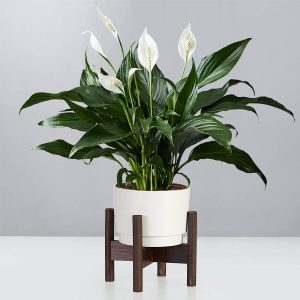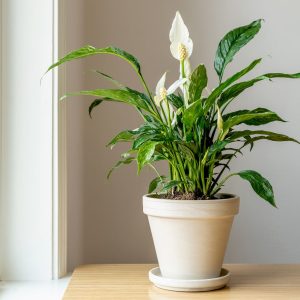The Boston fern is not only easy to care for, but also an interesting outgrowth and an eye-catcher in the home and office.
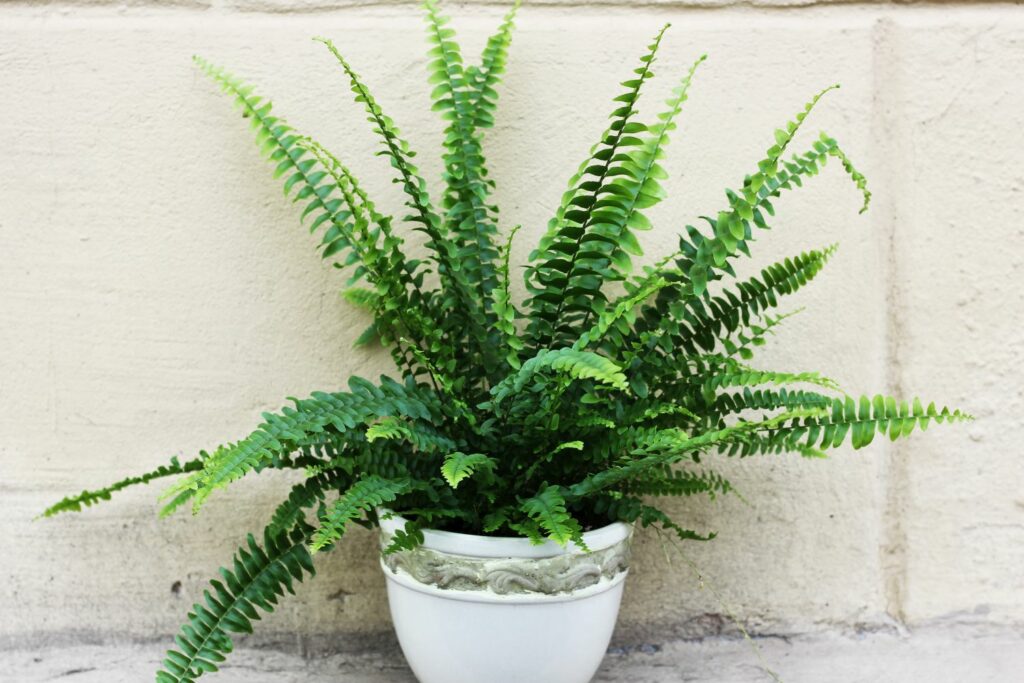
Here you will learn the suitable place for the Boston fern (Nephrodlepis exaltata) looks like, and get tips and tricks on the care and propagation of the tropical plant. We also present the most popular houseplant varieties.
Boston fern: origin and characteristics
The Boston fern is also known as the sword fern, wild Boston fern, Boston Blue Bell Fern, tuber ladder fern, or herringbone fern. The fern with its green leaves brings a little piece of the jungle into your home. It is a genus of plants within the family of sword ferns (Nephrolepida). There is still disagreement about the number of species, estimated at about 30. Boston ferns grow in tropical and subtropical forests either on the ground or epiphytically, that is, perched on other plants. These evergreen perennials have pinnate leaf blades that grow rosette-like from the center of the plant. They usually hang over the edge of the pot, which is why the fern looks especially good in a hanging basket.
The plant is also said to have an air purifying effect, which makes the fern all the more popular as a houseplant.
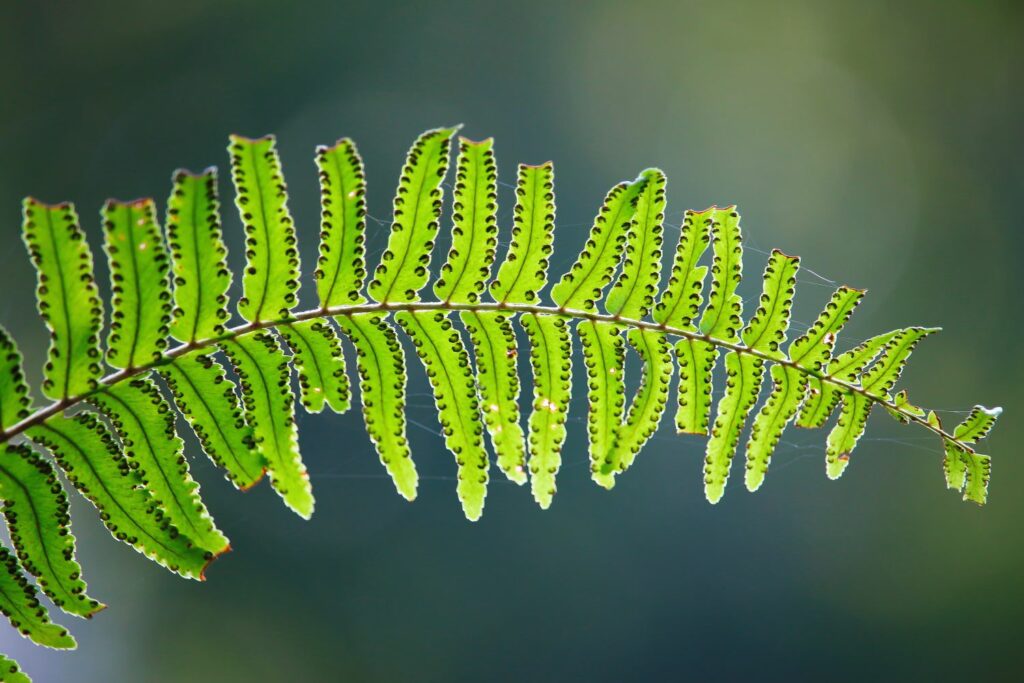
Did you know? Ferns are among the oldest plants on our planet. They populated the country more than 300 million years ago. They do not form flowers, but use spores found on the underside of the leaf for reproduction.
The most beautiful varieties
The Boston ferns include several varieties specially bred for indoor cultivation. Here we provide a brief overview of the most popular examples.
- Nephrolepis exaltata “Fluffy Ruffles”: This is a miniature variety with bifid leaves. This means that the leaflets of the leaves are divided again. This results in the “fluffy” look.
- Nephrolepis exaltata ‘Green Lady’: This variety impresses with a bushy, dense growth and a medium green leaf color.
- Nephrolepis exaltata ‘Variegata’: Unlike the other varieties, the leaves of this variety of heavy fern are not completely green, but green/light green/white variegated.
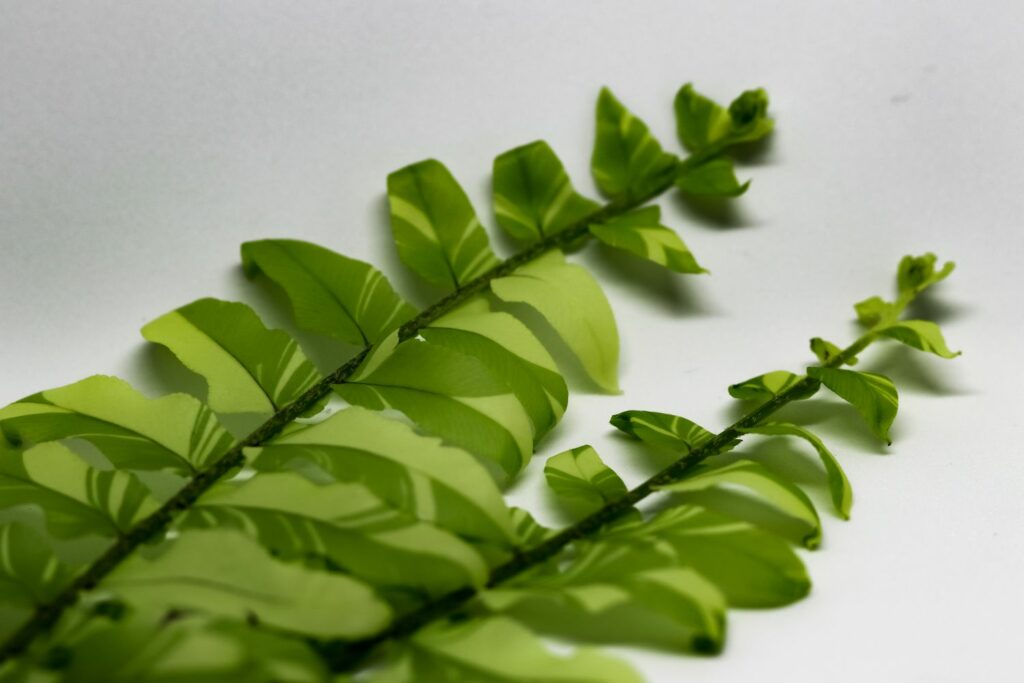
Growing Boston Ferns: Location, Soil, and Procedure
The ideal location is moist, warm and semi-shady to light, but not sunny, especially at midday. As the fern naturally grows under the protection of other plants, it should never be exposed to full sun, even indoors. Still, it needs some light for healthy growth. The temperature should be around 20 °C all year round and should not drop below 18 °C. As the Boston fern loves moist air, it should preferably not be placed near a drafty window or above a heater. Good conditions for the fern include the bathroom, if there is enough light to penetrate. If you want to keep the sword fern in the bedroom or any other place in the home, you need to keep the humidity high by spraying the plant from time to time. It is also possible to keep them in hydroculture, then the humidity in the immediate vicinity of the fern is automatically raised slightly.
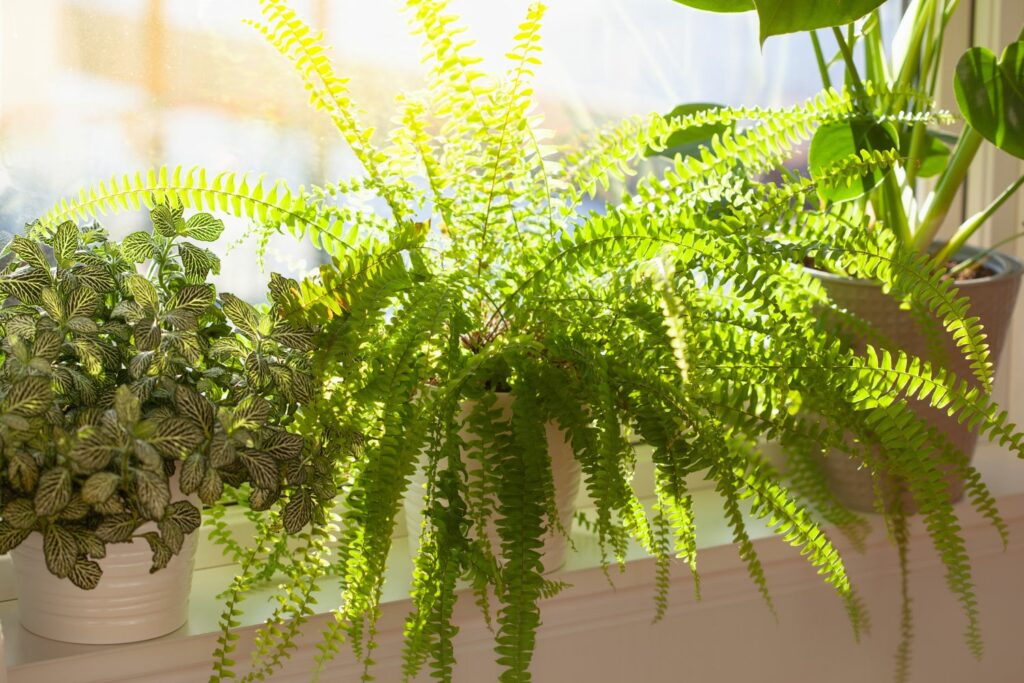
The substrate for the Boston fern must first of all have a high water storage capacity. A loose structure is also beneficial. A sustainable choice is, for example, our Plantura Organic All Purpose Compost. It consists of natural raw materials and does not contain peat. To prevent water deterioration, a drainage layer of broken clay or similar coarse material should be placed on the bottom of the pot.
During the summer months, the sword fern can also be placed outdoors. Again, you should choose a place protected from the sun and slowly get used to the new position. So put it outside for a few hours the first few days, then gradually longer and longer. From September, the fern will be brought back into the house. To increase the humidity, you can fill the mat with expanded clay balls and pour water on it. If you now place the pot on the balls, the Boston Fern with its roots, even though it is not in the water, still benefits from the evaporating moisture.
Boston Fern Care
In addition to a suitable location, the fern requires care in order for it to develop to its full magnificent extent. This includes, first and foremost, regular watering and fertilizing.
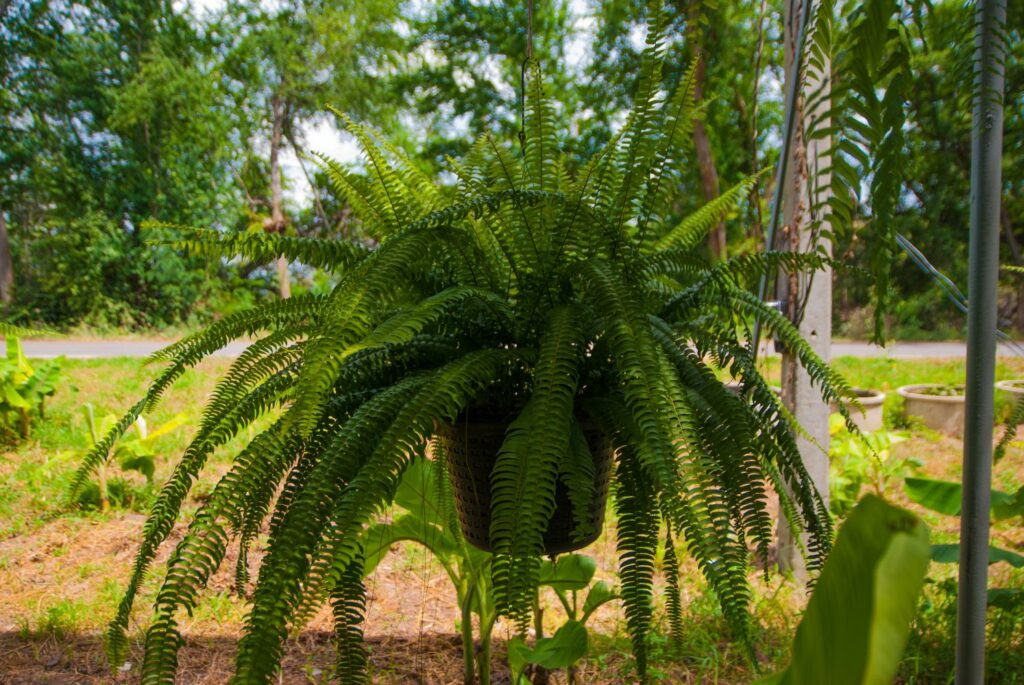
Watering, pruning and fertilization
The moisture-loving sword fern should be watered regularly – but not excessively. It likes a constantly moist root environment, but not waterlogged. Therefore, remove excess water that accumulates in the barrel. Preferably use lukewarm rainwater or other lime-free water. Stale tap water can also be used. In addition, the water for spraying the leaves should not contain lime, if possible.
You don’t need to prune the Boston fern, but you can remove dried, yellow or excessively long leaves. Cut them off at the bottom with a sharp knife. Boston sword ferns tolerate pruning and will sprout.
If you fertilize the houseplant, it will be green and lush with the appropriate dosage. During the growing season from spring to autumn, you can give the plant a green plant fertilizer every two weeks through the irrigation water. For this purpose, for example, our Plantura Liquid Houseplant Food, which provides nitrogen and potassium in the appropriate ratio for lush foliage in ornamental plants. For the Boston fern, a fertilizer dosage of half the dose is sufficient. After transplanting, you do not need to fertilize for the first three months. You can also leave out the fertilizer in winter.
Is the Boston fern hardy?
The sword fern is not hardy outdoors here, as it requires relatively high temperatures even in the cold season. A room temperature above 12 °C is necessary for the Boston Fern to continue to thrive. Nevertheless, the fern grows more slowly in winter, which means that it needs less fertilizer at this time.
In the spring, you can replant the fern. Young specimens preferably every year, older specimens only every three years, or when the root ball completely fills the pot. Use a larger pot and do not fertilize for the first few months after transplanting.
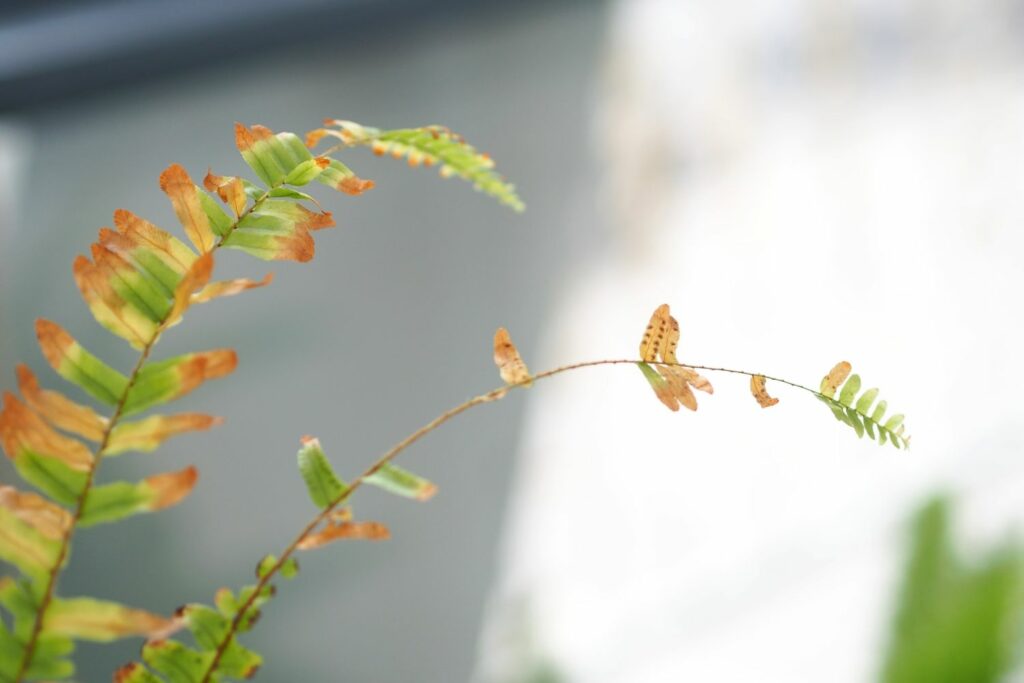
Fern that is losing leaves: what you can do
Are the leaves of your Boston fern wilting or turning brown, or is it even shedding its leaves? This can have a variety of causes. Once you have identified the cause, it is possible to save the plant.
- Dry air: It is often difficult to keep the humidity reasonably high. The leaves can then dry up and turn brown. Place a bowl of water next to the plant and spray the fern with lime-free water every few days.
- Dry soil: Dry soil can also cause wilted leaves because water can no longer be transported from the roots to the leaves. Finger test to see if the soil is still moist enough and water more often if needed.
- Direct sun: Since ferns are naturally accustomed to shady or semi-shady places, too much light can sometimes lead to brown, discolored leaves. Simply place the sword fern in a less bright location.
- Fertilizer: Too much or too little fertilizer can also cause leaf discoloration. Therefore, be careful not to use too much fertilizer, and fertilize a little less at first on a trial basis.

Propagation of Boston Ferns
There are several methods by which the fern can be propagated. In addition to dividing the mother plant and using offshoots, you can also try your hand at propagation via spores.
The easiest way to propagate is by dividing the root ball. If you are replanting the Boston fern, you can simply split the root ball in half and plant the two plants in separate pots. However, this method only works for older plants, which already have several leaf rosettes.
Propagation via offshoots is also possible with older specimens. These form small runners from the root ball which in turn can be separated and planted in their own pots. Keep the plants nice and moist and provide adequate humidity.
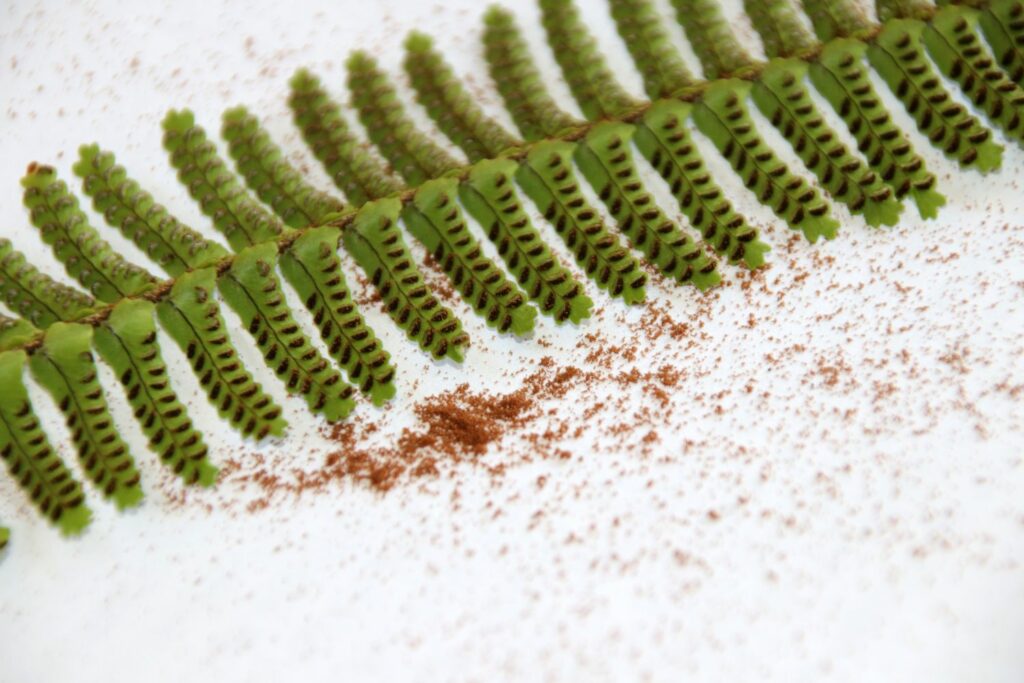
Propagation via spores is not quite so simple, but it can be done. When the spore capsules on the underside of the leaf are brown and ripe, you can cut off one of the fern leaves and place it on a piece of newspaper. The capsules should open after a while and the spores should fall onto the newspaper. Now you need to carefully distribute them on the growing substrate. Our Plantura Organic Herb & Seedling Compost is ideal for this purpose, with its properties precisely tailored to the needs of young plants. Spray the spores with water and cover everything with cling film. This can be sent every few days. The jar is best placed in a warm place. Over time, a mossy coating should form. This must be carefully placed on new substrate using a spoon and placed in a bright place. With luck, little sword ferns will form here in a few weeks. Always be sure to use clean tools and sterile, boiled water.
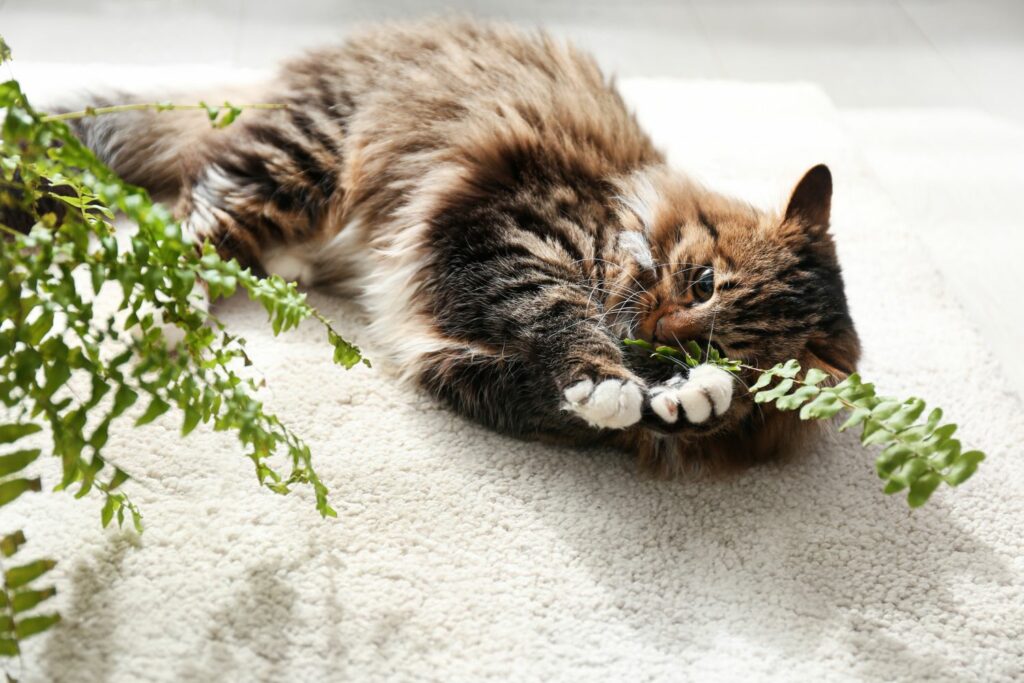
Is the sword fern poisonous?
Boston ferns are mildly toxic, meaning they contain toxic substances in such small amounts that even eating the seeds is considered safe. Consequently, the fern is not toxic to cats, dogs or other pets, and you don’t have to worry about your children.
Another interesting fern for indoor keeping is the bird’s nest. Our article will explain what makes it so special and how to take care of it.



